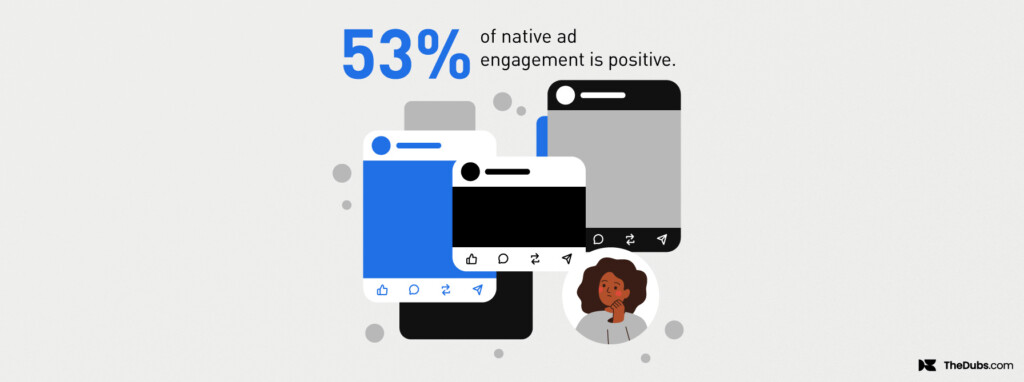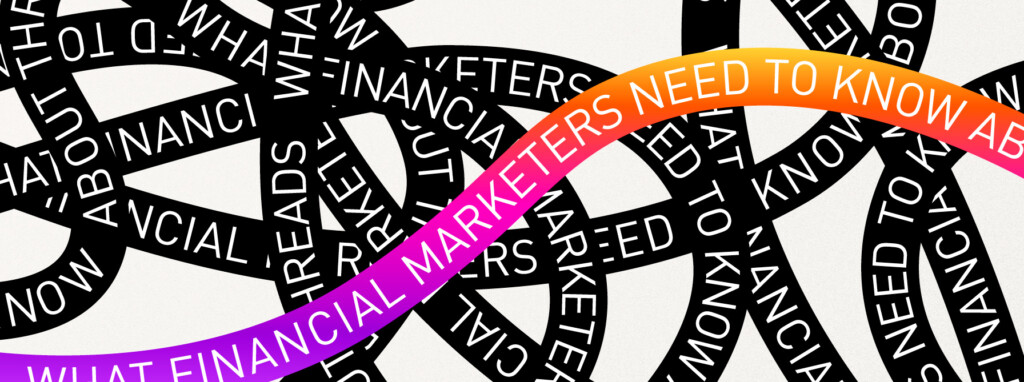Paid advertising is a critical component of every finance brand’s marketing strategy, yet knowing which method is best can be challenging. Unfortunately, not every paid advertising strategy is created equal and it takes time to strike the right balance. At the end of the day, paid advertising can help you reach past your organic following and help you gain, nurture and convert leads.
The ins and outs of paid advertising
As algorithms change and people spend more time online, it pays to get your paid advertising strategy right. Paid advertising is a method of marketing where you pay for an ad to be displayed on relevant online platforms. Known as pay-per-click, paid advertising methods drive traffic to your site.
As Tara Cimino, Head of Social Media at The Dubs, states, “To decide on the most suitable strategy, it’s essential for finance brands to identify a key outcome.” She continues, “This will set out clear KPIs which will impact the content created, the channels used and budgets allocated.”
According to one study, paid advertisements have a 200% ROI. A paid advertising strategy can help you reach beyond your organic following and target new clients. But it has a number of other benefits:
- Increase brand awareness (ads can increase brand awareness by 80%)
- Improve leads
- Drive higher engagement
- Target specific demographics or geographic locations
There are several different types of paid advertising strategies including:
- Social media
- Paid search
- Display ads
- Native ads
Social media advertising
81% of financial marketers have picked up new leads via social media advertising, making it a great paid media marketing strategy. A paid social media strategy can be effective in amplifying your social content, enabling you to reach your target audience and nurture them down the customer acquisition funnel.
Ensuring you create content right for each social platform is where a successful social media strategy gets tricky. Remember to cater the content and ad to the platform and the audience you’re targeting.
Pros and cons
Social media advertising is a great way to improve brand performance online and reach beyond your organic following. With over 4.9 billion people in the world owning a social media account, it pays to have your brand’s ads visible to them.
Tara explains, “There are many pros to paid advertising, such as enhancing your organic following, generating new leads and scaling to as many markets as possible.”
However, while social media advertising is an effective marketing tactic, there are some areas of concern. If your target audience isn’t on social media or your campaign doesn’t resonate with them it can be a waste of time.
“On the other hand, if the content isn’t resonating with your target audiences or your strategy isn’t well produced or delivered, it could be costly for the business, with low ROI,” shares Tara.
Paid search advertising
Paid search advertising (AKA search engine marketing), is when you pay to have your ad show up on search engine results whether that’s Google, Facebook, LinkedIn etc. It’s one of the most common types of paid advertising strategies and one of the simplest to set up.
While SEO remains critical to any financial marketing strategy, paid search advertising can be beneficial to gaining those necessary clicks. PPC has been seen to generate twice the number of visitors compared to SEO.
Pros and cons
The best aspect of paid search advertising is you can effectively target the right audiences. A great example of this is the ability to remarket your site and brand to people who have previously visited your website, helping to nurture leads and improve brand awareness.
“ Paid advertisements have a 200% ROI”
Another aspect is you always are one of the first options in search engine rankings. This can improve your leads and gain traffic to your website. In addition, paid search advertising offers easy analytics so you can track its effectiveness and make the necessary adjustments.
Paid search advertising isn’t perfect, however, and there are drawbacks to consider. The lack of visual accompaniments means your ad can sometimes not be seen of generate the same brand awareness or impact. Further, they can be costly and you have to pay each time a user clicks your ad.
Display ads
Display ads combine text and images that link to a URL where users can find out more information about your finance brand and services. While text with images is the usual go-to for display ads, they can also feature moving images and videos (also known as rich media ads). The most common form of display ads is banner ads.
Pros and cons
Display advertising can ensure your finance brand gets noticed and enable you to connect with prospective clients. It offers precise targeting, reaching the right audience based on demographics and interests.
Further, it increases brand visibility and awareness by appearing on relevant platforms. In addition, it also offers creative flexibility to your finance brand enabling you to showcase your unique value propositions.
Display advertising for finance brands has a couple of caveats to consider. Ad fatigue and accidental clicks are potential challenges, but with engaging creatives and clear visuals, these can be overcome. Ad blockers can also pose some hurdles.
Native ads
When done well, you may not even notice when you’ve seen a native ad. Native ads are designed to blend into the content they are surrounded by. So, if this is on a social platform, they will pose as a regular post while continuing to promote users to click and follow through to your site.
The aim of a native ad is to look organic helping to make it look more authentic and grab the attention of users.
Pros and cons
One of the strongest aspects of native advertising is that by their nature, native ads aren’t intrusive but they can still capture your audience’s attention. Their visual nature and targeted content also enable greater click through rates and audience impact.
“Native advertising can drive better campaign performance when compared with other ad formats, helping drive conversions,” Tara explains. “Native ads can also be contextually targeted towards target audiences, meaning there is a higher chance of interactions and engagement.”
One drawback is it can be difficult to monitor and evaluate their effectiveness. Tara notes, “However, measuring performance can be complex if your campaign goals and audiences are not considered properly from the start.”
The bottom line of paid advertising
In a study by MailChimp, it was identified digital advertising would soon make up 75% of all media spending by 2025. As digital advertising is increasing in importance it’s critical your finance brand understands how best to measure if it’s working.
Tara shares, “To optimise and measure your paid media strategy, you need to consistently analyse your social and website metrics.” She goes on, “Look past platform metrics such as likes, but identify how your media strategy influences web conversion rates to understand what is successful about your strategy and what isn’t.”
Just like with any marketing strategy, it requires constant monitoring to ensure it’s optimised for your KPIs and targets.









